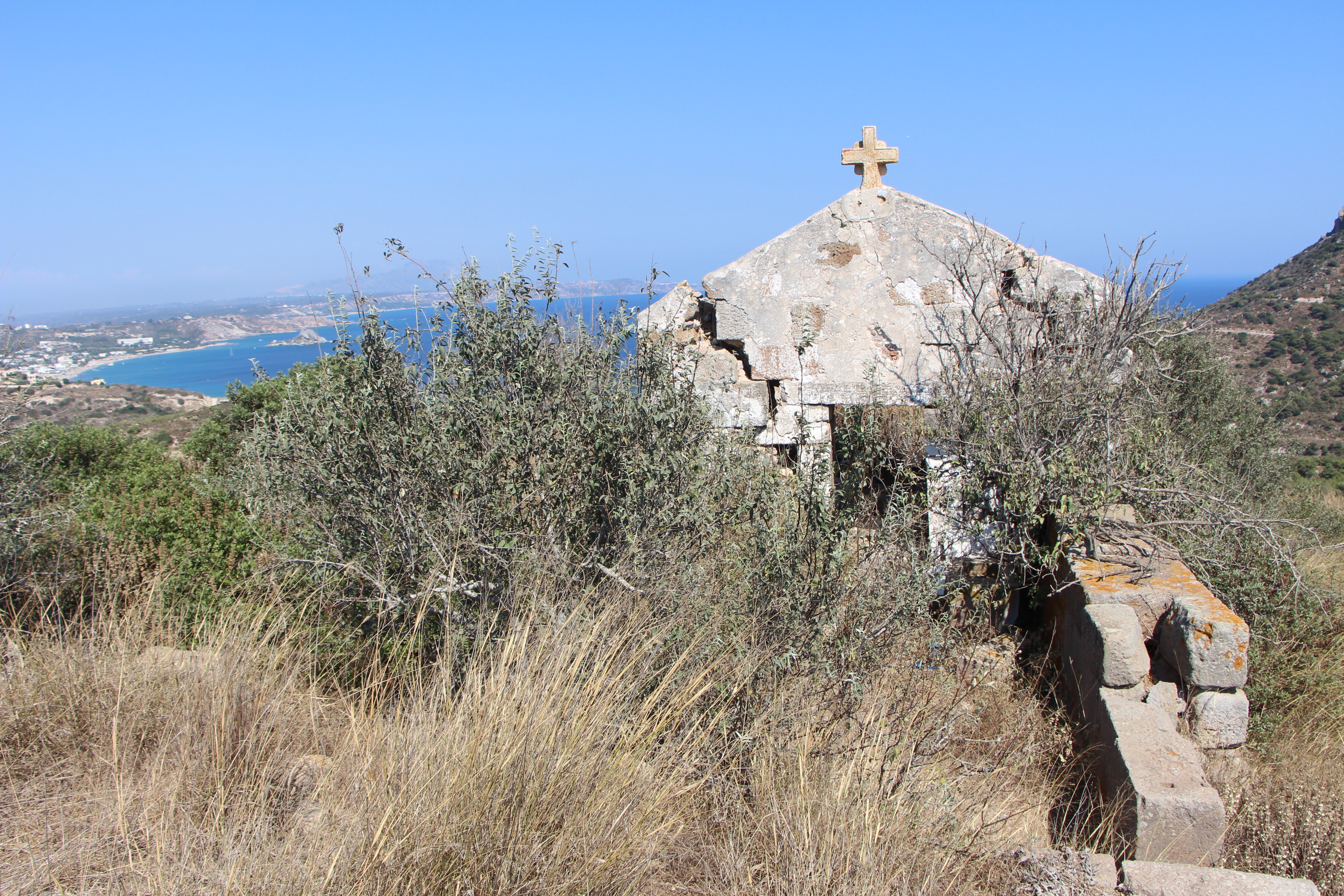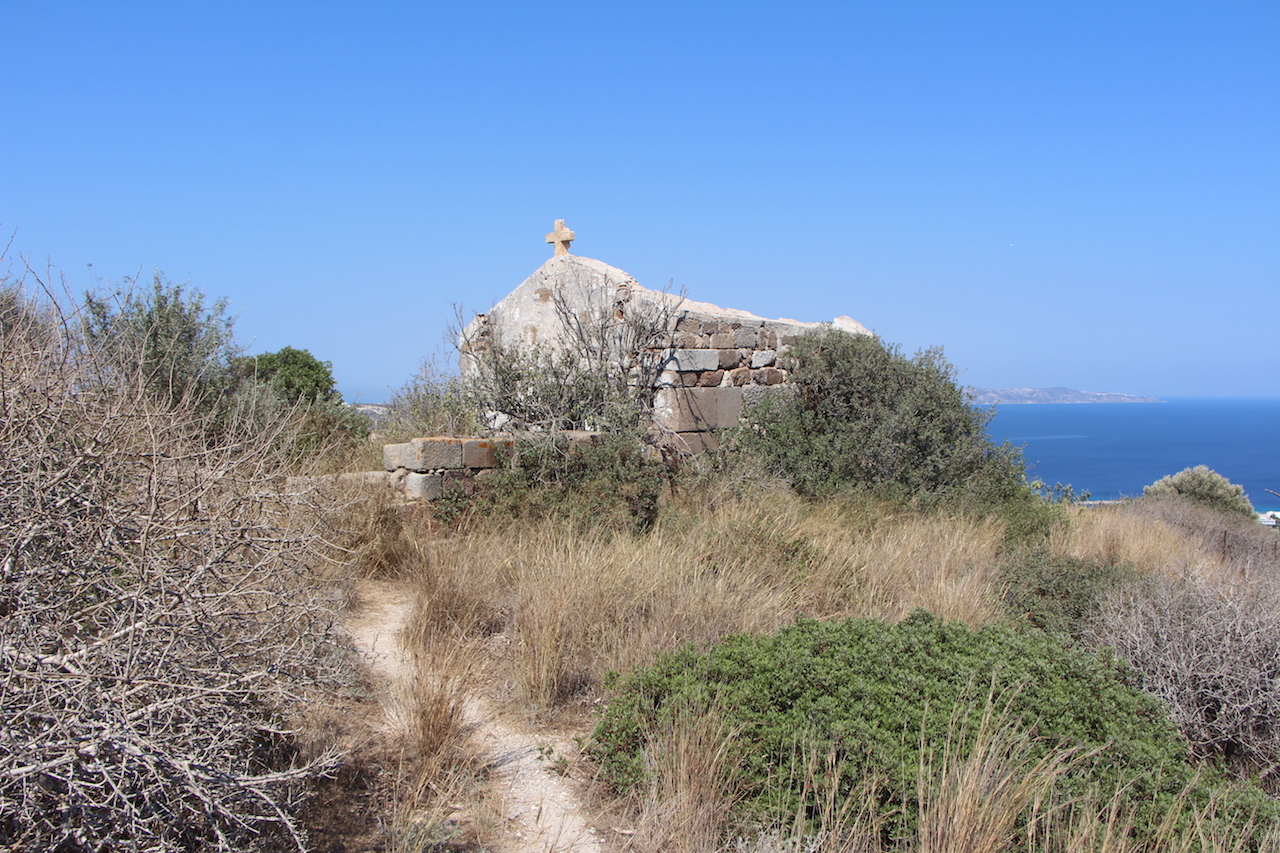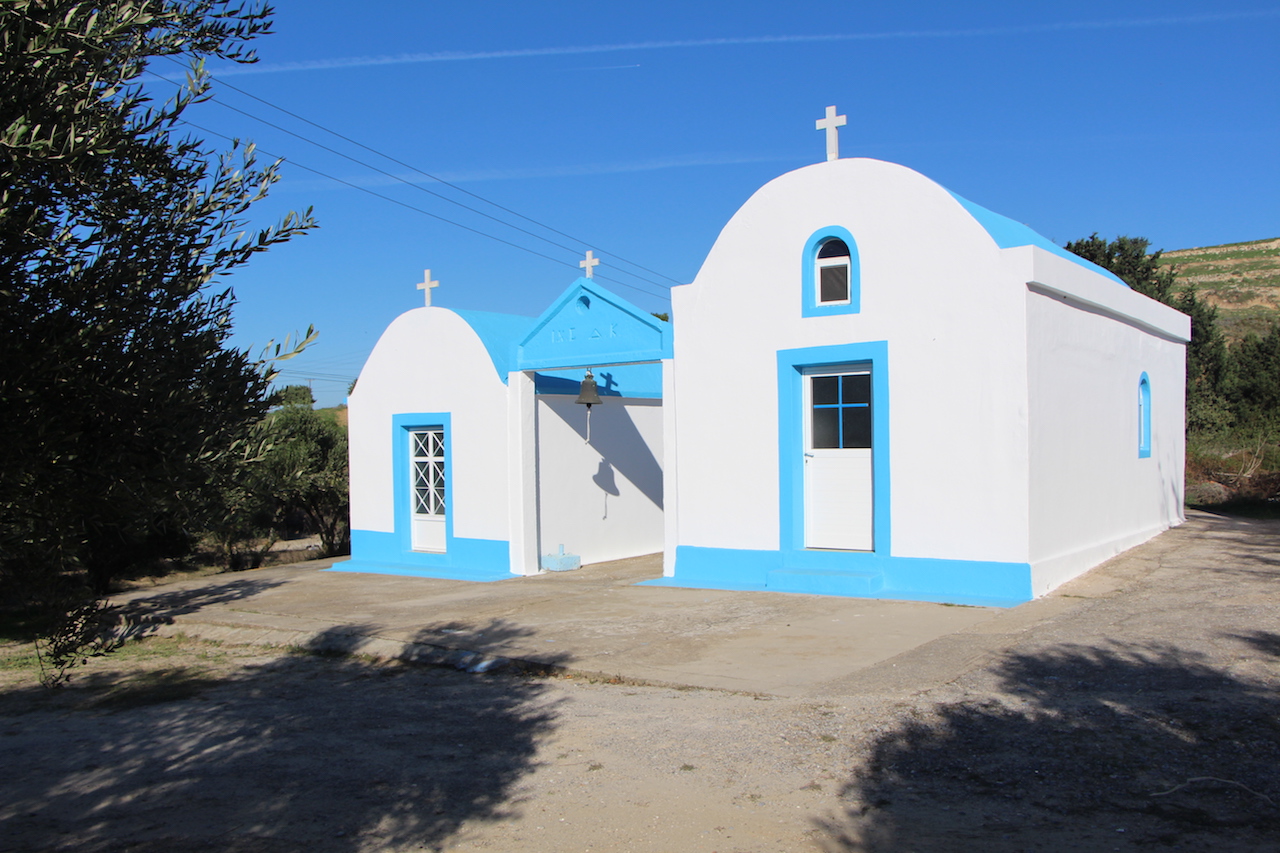Some 1500 meters South of the town of Kefalos, on the southern side of a little hill, lies the Church of Panagia Palatiani dedicated to the Genesis of the Virgin Mary. The church was built on top of an ancient temple dedicated to Demeter and a number of ancient remains were used to build it. Notably, the south wall of the church lies on the wall of the ancient temple, built with red trachyte from the nearby quarry of Pelekiton, and on the entrance of the church was an inscription dedicated to Demeter. This ancient temple was built in the 5th century BC and its dimensions were 7×13 meters. The German archaeologist Herzog, in the beginning of the 20th century, described a stoa of doric order in the near vicinity of the church.
The church itself is an orthogonal building ( 5.25 * 2.90 meters) while the roof and an apse on the eastern side have collapsed probably during the 1953 earthquake after which the church was abandoned. If you look carefully you will discern some faint paintings on the walls. On the southwestern side of the church there were some cells and some rooms for storage of which very little remains following the 1953 earthquake.















